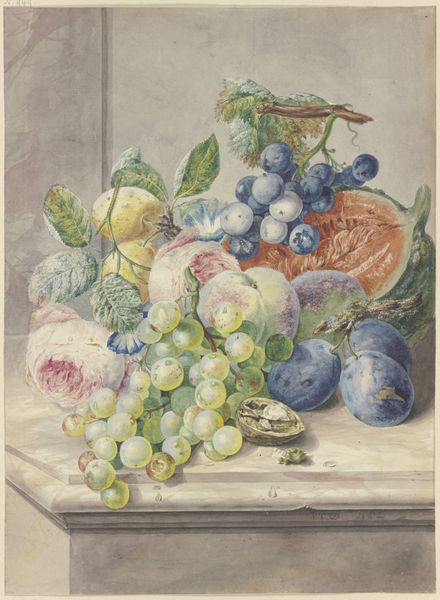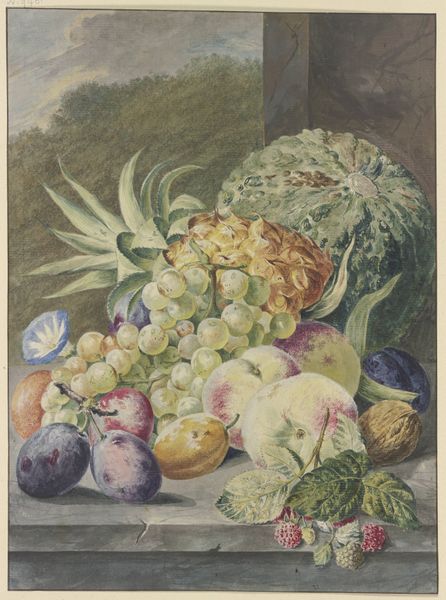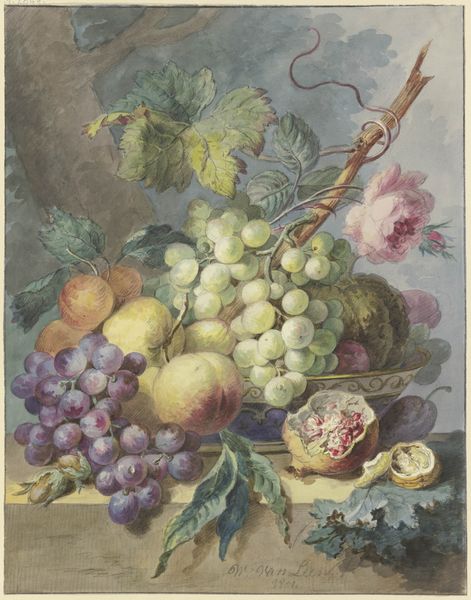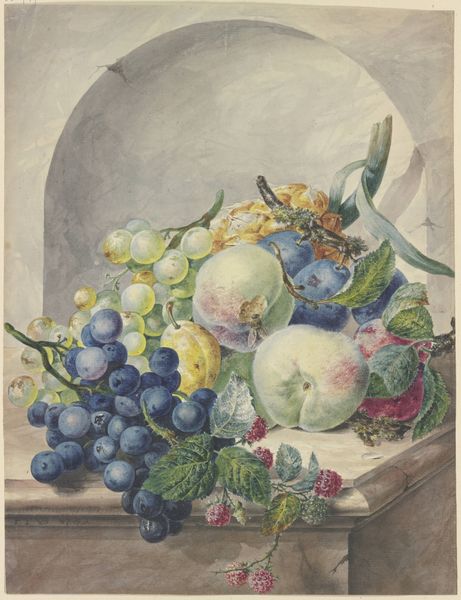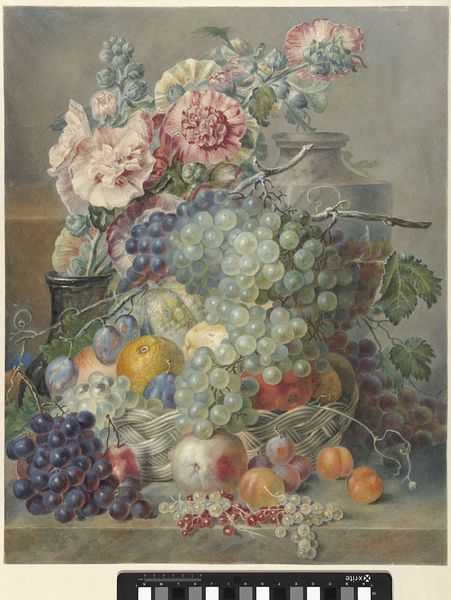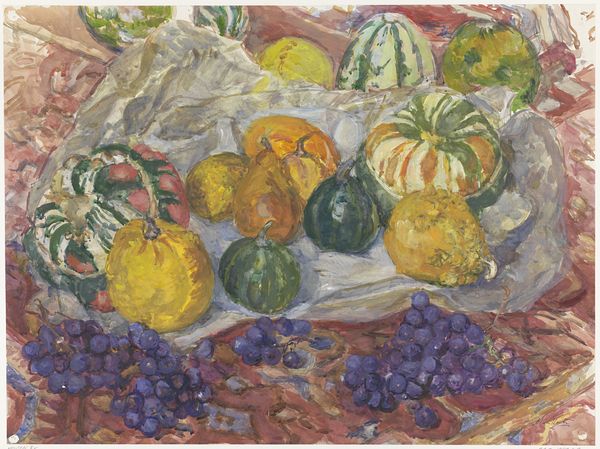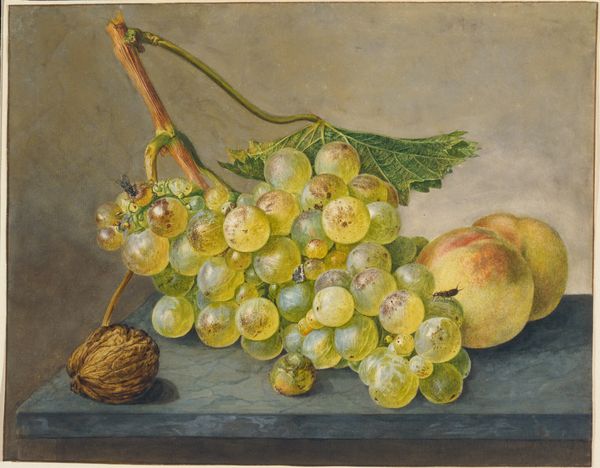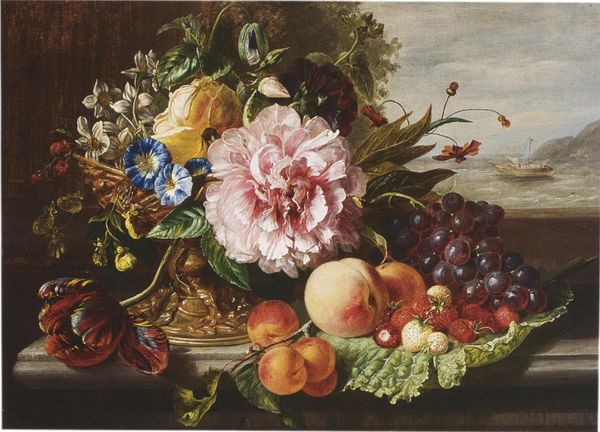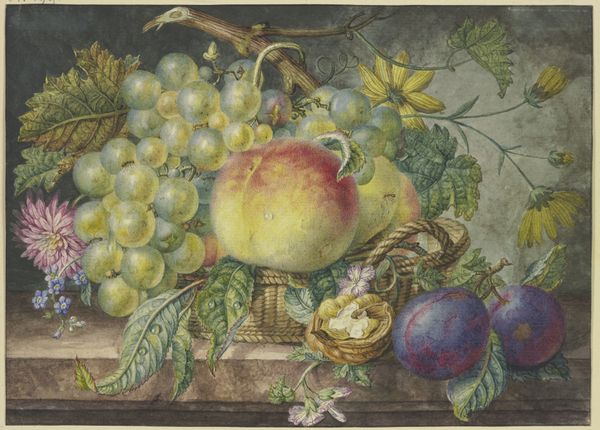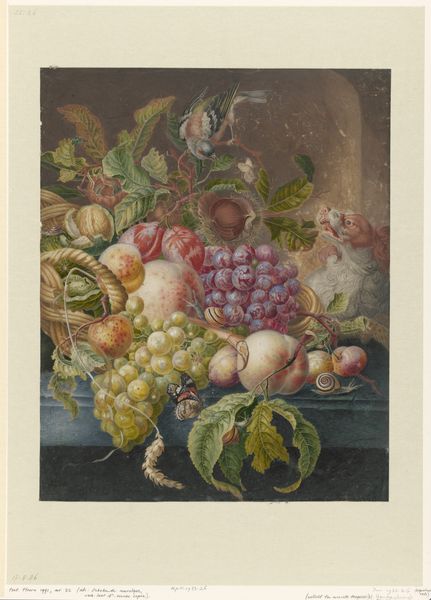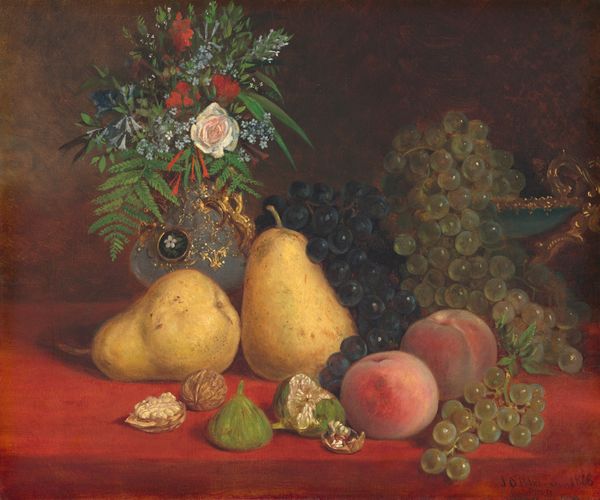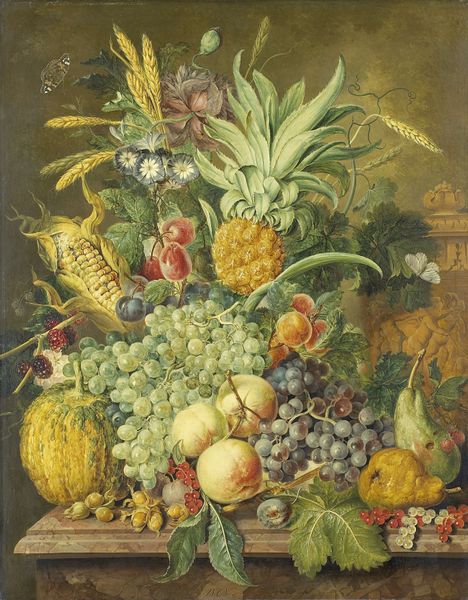
oil-paint, watercolor
#
gouache
#
impressionism
#
oil-paint
#
oil painting
#
watercolor
#
fruit
#
watercolour bleed
#
watercolour illustration
#
watercolor
Dimensions: height 172 mm, width 210 mm
Copyright: Rijks Museum: Open Domain
Curator: Here we have "Vruchten- en bloemstilleven", or "Fruit and Flower Still Life", an oil and watercolor piece from the 19th century, created by Albertus Steenbergen. It's a lovely example of impressionistic techniques used to depict common objects. Editor: My first thought? Dreamy. The colors feel almost… muted, like a memory seen through a hazy lens. But it also possesses a certain freshness, almost as if those flowers were freshly plucked. I sense a distinct longing embedded in its aesthetic language, maybe a melancholic reflection upon transience. Curator: Precisely! These types of still life often held symbolic weight. Think of the wilting flowers—memento mori. Editor: I find myself gravitating towards the surface it’s all arranged on. What appears to be a marbled tabletop, perhaps suggesting ideas of opulence, becomes, under scrutiny, another space upon which hierarchies can be formed—a reflection on class structure from an artist deeply embedded within it, no doubt affected by such structures. Curator: An astute observation! I'm intrigued by Steenbergen's choice to juxtapose these refined, polished fruits with those rather unrestrained wildflowers. It is a sort of dance between cultivation and nature, is it not? Editor: The choice of produce might indicate so much more than its apparent subject matter, hinting at the burgeoning global trade networks within this time period; who owned and controlled the networks of access to these consumables. A seemingly innocuous still life holds worlds inside of it. Curator: The composition, to me, feels both classical and a touch rebellious. Steenbergen clearly had training, and this reminds me of Dutch Masters but infused with a proto-impressionist freedom. What I love most is the subtle use of light and shadow to render each piece. Editor: And in whose homes might work like this be hanging? In the homes of merchants, solidifying a visual record of class ascension via an aestheticized performance of bourgeoisie taste, no doubt. I can certainly agree about Steenbergen and his handling of light: there's a certain radiance he captures that evokes very complex socio-economic thematics. Curator: Thinking about the labor embedded in such arrangements certainly transforms my interpretation, revealing deeper levels of appreciation and critical understanding. Thank you for that insightful perspective! Editor: A lens to understanding always needs varied perspectives! It’s exciting to see such depth emerge from a quiet still life.
Comments
No comments
Be the first to comment and join the conversation on the ultimate creative platform.
